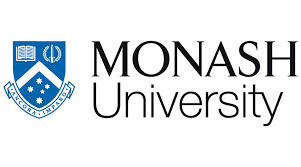Monash University: Funding fuels gender inequity in STEMM leadership
Universally, women are underrepresented in senior academic leadership in science, technology, engineering, maths, and medicine (STEMM).
In a recent paper published in the journal Immunology and Cell Biology, my colleague, Professor Louise Purton, from St Vincent’s Hospital, and I report that – at almost every level – women are held back by their gender in funding, their publications (quality and quantity), international reputation, invitations to speak at conferences, and contributions to scientific committees.
At the heart of the paucity of women in STEMM, in Australia and globally, is that female scientists are less successful in getting funding. This is often explained away as simply a consequence of fewer women applying for it.
But an unwillingness to apply for STEMM funding simply doesn’t adequately explain the gender inequities in funding outcomes, both in terms of fewer funded applications and also reduced funding awarded per grant, resulting in less overall success.
Instead, there are entrenched historical, systemic conscious and unconscious biases during peer review processes in academic institutions and peak funding bodies that simply favour men. And this translates to an overall loss of women’s contributions to medical research, reducing innovation through lack of diverse workforces.
According to our research, many factors contribute to the underrepresentation of women in academic research:
Gender stereotypes place value on male leadership traits, while placing expectations on women to take on the greater household or carer responsibilities (these biases aren’t limited to academia, and can be identified in industry, government and beyond)
In academia, women are expected to be more involved on committees, provide pastoral care, do more service work, and have more teaching commitments, which reduces their time for their research, authoring journal articles and preparing grant applications
Women are underrepresented within conferences and symposiums – important events for increasing visibility and networking
When women do present at conferences, they’re less likely to be introduced with their title of doctor, associate professor or professor – one of the many biases that can go unrecognised.
A young woman in a lab coat and protective glasses working on a machine in a lab
The peer review processes are unfair
Peer review is at the basis of almost all measures of academic merit, and – whether it’s for promotion within an institution or in the application for government funding – peer review processes lack transparency and fairness.
This is despite research showing women contribute more labour, they receive less credit for publications, and are underrepresented as authors.
Regarding the all-important scientific publications, women authors are less-cited than men and, on average, men cite more men, including self-citations.
This is the currency of academic performance – journal publications are crucial in getting funding and promotion, yet if you’re a woman, you’ll simply publish and be cited less, regardless of your output.
Read more: STEMM the flow: More work needed to support women in medical research
While most quality academic journals accept scientific papers without the gender of the authors being obvious, this gender neutrality breaks down once the research is accepted for review, fellowships, or investigator-initiated grant schemes, which fund the majority of the world’s medical research.
At this stage, the gender of the applicant or author is clear, and it’s at this barrier that women fall behind.
Australia has fewer tenured (long-term) positions compared with other OECD countries, which means that, in Australia, academics rely heavily on peer-reviewed funding to support their salary, salaries of their staff, and laboratory consumables.
The largest source of funding for biomedical researchers is the National Health and Medical Research Council (NHMRC), which is Australia’s largest government-supported funding body.
Three years ago, the NHMRC overhauled its funding schemes, dividing them into:
Investigator Grants, where the sole chief investigator receives five years of funding for their salary, plus research support packages for laboratory expenses, including staff salaries
Ideas Grants, where one or more chief investigators’ salaries and laboratory consumables are funded for three to five years
Synergy Grants, with four to 10 chief investigators equally sharing A$5 million over five years, and requiring mixed genders and diversity in the team composition.
A woman examining a set of lab results on a piece of plastic
The more seniority, the greater the gap
Since its introduction in 2019, Ideas Grants have recorded a 2% lower success rate for women. In the Investigator Grants scheme, which assesses the quality of the researcher, and which was allocated approximately 40% of the annual NHMRC funding, women had an almost a 5% lower success rate.
Recent studies by myself and Professor Purton, and the NHMRC, has found that inequity in funding escalates as women become more senior.
Since 2019, there have been three rounds of the new NHMRC grants schemes. Although overall success rates were similar, men were disproportionately awarded a staggering 20% more grants than women, resulting in an extra A$400m in funding for men to continue and progress their research in only three years.
As in all things, money talks. If you have less funding, your research output is reduced compared to your male counterparts, the pathways forward diminish – and women are forced out of science at earlier stages in their careers.
Not only is this grossly unfair, but removing access to the brains, experience and expertise of a group of people based on their chromosomal makeup is neither cost-effective, nor scientific.

